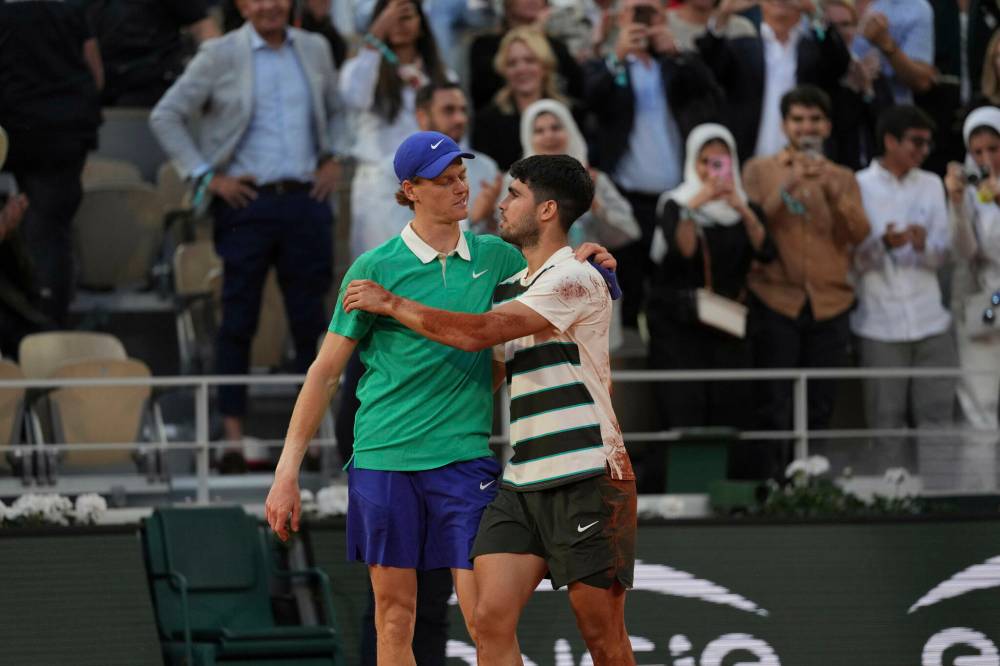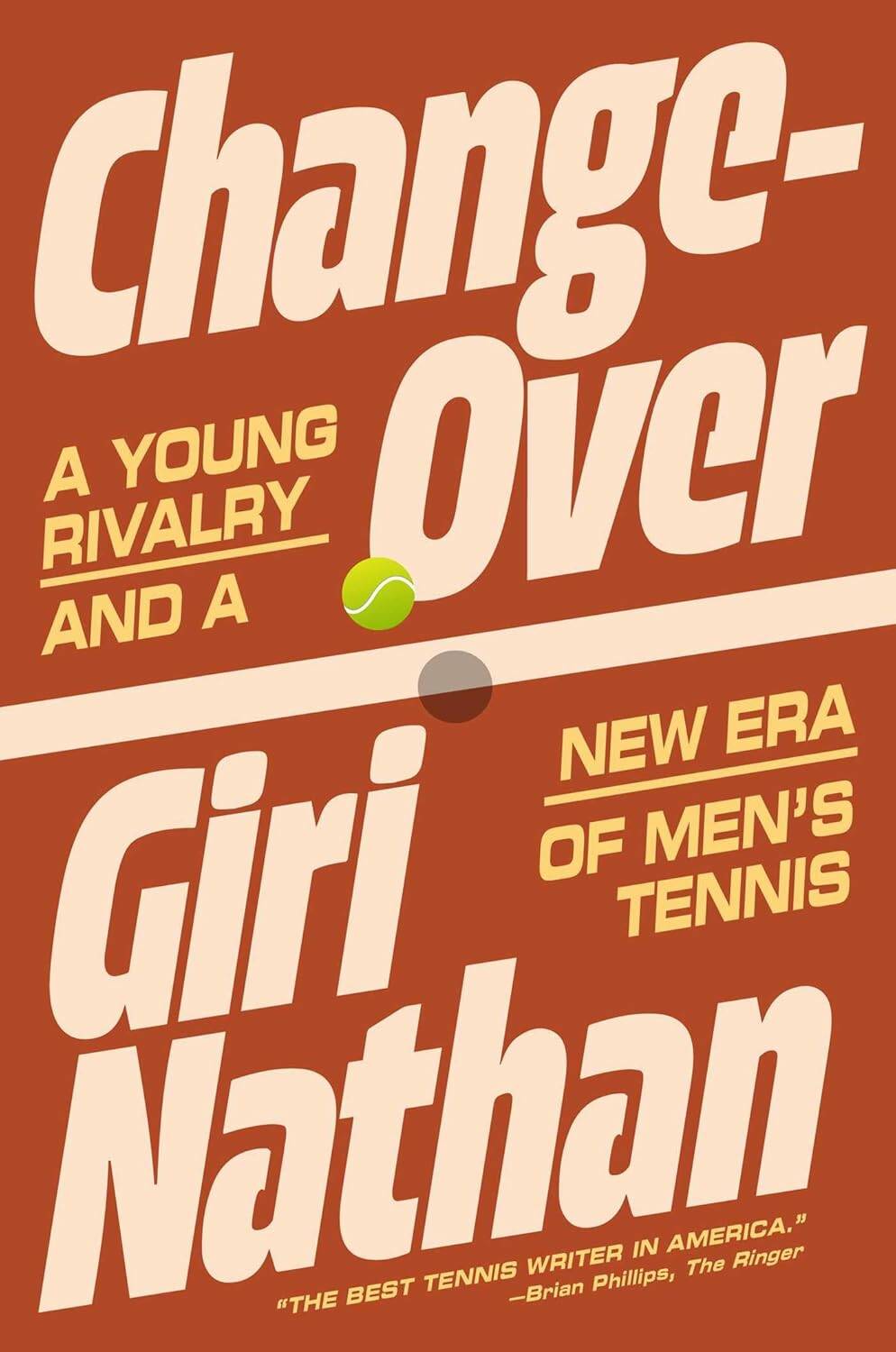Serving up winners
Sinner-Alcaraz rivalry ushers in a new generation of men’s tennis greatness
Advertisement
Read this article for free:
or
Already have an account? Log in here »
To continue reading, please subscribe:
Monthly Digital Subscription
$0 for the first 4 weeks*
- Enjoy unlimited reading on winnipegfreepress.com
- Read the E-Edition, our digital replica newspaper
- Access News Break, our award-winning app
- Play interactive puzzles
*No charge for 4 weeks then price increases to the regular rate of $19.00 plus GST every four weeks. Offer available to new and qualified returning subscribers only. Cancel any time.
Monthly Digital Subscription
$4.75/week*
- Enjoy unlimited reading on winnipegfreepress.com
- Read the E-Edition, our digital replica newspaper
- Access News Break, our award-winning app
- Play interactive puzzles
*Billed as $19 plus GST every four weeks. Cancel any time.
To continue reading, please subscribe:
Add Free Press access to your Brandon Sun subscription for only an additional
$1 for the first 4 weeks*
*Your next subscription payment will increase by $1.00 and you will be charged $16.99 plus GST for four weeks. After four weeks, your payment will increase to $23.99 plus GST every four weeks.
Read unlimited articles for free today:
or
Already have an account? Log in here »
In 2006, David Foster Wallace wrote that tennis matches between Roger Federer and Rafael Nadal pitted “the passionate machismo of southern Europe versus the intricate clinical artistry of the north. Apollo and Dionysus. Scalpel and cleaver.” In time, Novak Djokovic arrived to complicate that dynamic, and the era of the Big Three was born.
Nineteen years later, two of the Big Three have retired and the third, Djokovic, is waning. Yet Wallace’s observation could again describe the two players currently atop men’s tennis: the stoic, methodical Jannik Sinner, who descended from Italy’s mountainous northernmost province, and the mercurial hotshot Carlos Alcaraz, raised on the sun-baked clay courts of Spain.
American tennis reporter Giri Nathan is the first to attempt a book-length treatment of this roughly three-year-old rivalry, which culminated in a thrilling five-and-a-half-hour French Open final at Roland-Garros in June, won by Alcaraz; resumed five weeks later at Wimbledon, where Sinner exacted his revenge; and, barring any upsets after press time, looked likely to play out againon the hard courts of the U.S. Open on Sunday.

Thibault Camus / Associated Press files
In this June 2025 photo, Carlos Alcaraz (right) hugs Jannik Sinner after defeating him in the French Open final. Sinner would return the favour in July at Wimbledon.
Changeover is an attempt to describe and differentiate the two players who, barring serious injury, could dominate men’s tennis for the next decade. It’s also an attempt to understand how both of these young men — Alcaraz is 22, Sinner 24 — got to be so good. Between them, they have won eight of the last nine Grand Slams.
Nathan’s book is a “writearound,” a book written without the participation of its subjects. He has constructed an insightful and entertaining read despite failing to secure a sit-down interview with either player or with any member of their respective entourages. Instead, his insights are gleaned from workmanlike perches: tournament press boxes, post-match news conferences, brief asides in stadium hallways and, in one memorable passage, a chance encounter in an airport.
Nathan’s greatest tools are his eye for detail, his knack for reading between the lines and his thorough knowledge of the game of tennis. Gifted at description, he compares the sound of Sinner’s groundstrokes to “someone hucking a billiard ball against a garage door.”
Nathan avoids picking a favourite as he scrutinizes both players. His writing contains the empathy and skepticism required to analyze superstar athletes. If this approach seems rare, Nathan says that’s because sports journalism has deteriorated to the point that much of it is now “window dressing for online sports gambling firms.”
Nathan is also quite funny, as when he compares the Parisian crowds of Roland-Garros (“the one place in the world where I have viewed best-of-five professional tennis through a fog of cigarette smoke”) to the throngs in New York (“The U.S. Open crowd is loud, quite drunk, and immune to shame. American, basically”).
Changeover is accessible for those new to the sport. Nathan explains the basics of the modern game, such as topspin, and the contours of the gruelling pro tennis circuit, which flings players around the world 11 months per year. Shortcomings are few; tickled by the candor of Russian player Daniil Medvedev, Nathan devotes an entire chapter to him, momentarily losing the book’s focus.
Sinner and Alcaraz cut different paths to the professional circuit and possess different playing styles. Remarkably, neither player grew up with overbearing parents, a rarity in the upper echelons of tennis (see Andre Agassi’s 2009 memoir, Open, for the tragicomic epitome of the Tyrannical Tennis Dad).

Changeover
Temperamentally, the two players are also different. “With Alcaraz, you get the sense that if there were no crowd, there would be no point to all this. His trade is tennis, but it is also spectacle,” Nathan writes. Contrast that with Sinner, whose playing is marked by consistency and an unflappable quality that served him well when he found himself in a doping scandal earlier this year, caused by a mistake by a member of his team and resulting in a three-month ban.
Readers will be left wondering if a third otherworldly player will emerge to challenge the dominance of Sinner and Alcaraz. Top prospects include England’s Jack Draper and Brazil’s João Fonseca. Or, more likely, some teenager we’ve never even heard of yet.
Jordan Ross is a Winnipeg writer and photographer who swats and sweats at the Sargent Park tennis courts.


